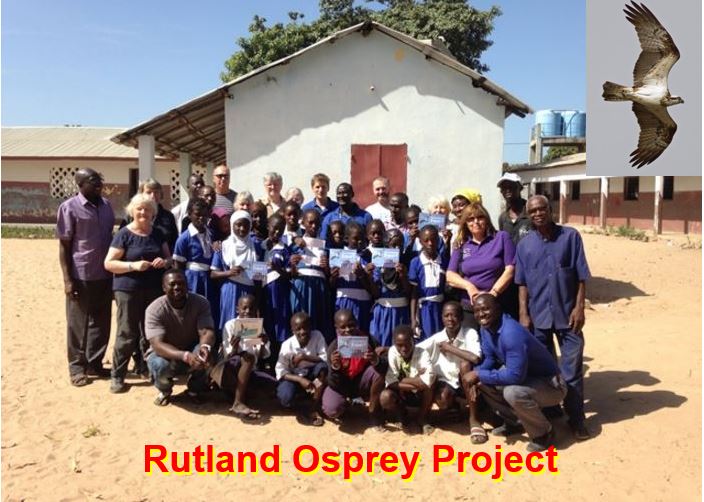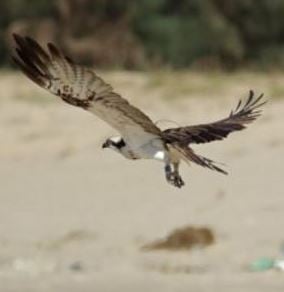A Scottish osprey that went missing for 18 months has been found thousands of miles away on a West African beach. The 3-year-old male had been tagged on July 2012, but its tracker stopped working and nobody knew where the bird had got to, that is until recently.
The osprey, known as Blue YD, was found on a beach in western Senegal. Since the tag stopped transmitting in May 2014, it had been briefly spotted in St Andrews in Scotland and North Yorkshire in England..
A sister charity of the Scottish Wildlife Trust – which had tagged the bird at one of its reserves near Forfar – spotted him in Senegal while looking for a different osprey.
 The Scottish osprey – Blue YD – was spotted several thousand miles away on a beach in western Senegal, West Africa. (Image: scottishwildlifetrust.org.uk. Credit: John Wright/Rutland Osprey Project)
The Scottish osprey – Blue YD – was spotted several thousand miles away on a beach in western Senegal, West Africa. (Image: scottishwildlifetrust.org.uk. Credit: John Wright/Rutland Osprey Project)
The sister charity – the Leicestershire and Rutland Wildlife Trust – had sent a team to Lompoul sur Mer in western Senegal to locate a female osprey that had been tagged.
One of the team members spotted Blue YD on a 19-mile (30 km) stretch of beach where approximately 100 ospreys come and spend their winters.
A lucky encounter
The sister-charity has been sending team members to West Africa since 2011 as part of its Osprey Flyways Project, which is tasked with educating schoolchildren in Africa about osprey migration.
Scottish Wildlife Trust’s Reserves Manager for North East Scotland, Rab Potter, made the following comment regarding satellite tagging:
“Ospreys are a wonderful conservation success story. Once extinct in the UK, there are now around 240 breeding pairs in the UK thanks to the efforts of nature conservation charities like the Scottish Wildlife Trust and the Leicestershire & Rutland Wildlife Trust.”
 The aim of the Rutland Osprey Project is to teach children in Africa about the bird’s migration. (Image: ospreys.org.uk)
The aim of the Rutland Osprey Project is to teach children in Africa about the bird’s migration. (Image: ospreys.org.uk)
“But for such a high profile species, there’s still an awful lot we don’t know. That’s why satellite tagging is so important – because it helps us get a better insight into the lives, migration routes and behaviours of these magnificent birds.”
Regarding spotting Blue YD in West Africa, John Wright, Field Officer for the Rutland Osprey Project, said:
“This is the second visit I’ve made to Lompoul sur Mer and both times I’ve counted around one hundred ospreys consisting of many German and Scottish birds. It was fantastic to see that Blue YD was alive and well. He’ll no doubt be enjoying the final few weeks of warmth before he makes his way back to the UK for the breeding season at the end of March.”
Jonathan Pinnick, Assistant Manager at the Scottish Wildlife Trust’s Loch of the Lowes Visitor Centre, a world-famous place for its ospreys, said:
“It’s wonderful to learn more about the life of a bird that we have followed since it was a fledgling and it shows the value of tagging in allowing us to track the life history of individual birds. Perhaps he will be spotted back in Angus this summer, hopefully breeding and helping the continued recovery of the osprey population in Scotland.”
Video – Osprey the ultimate fisher
This video contains some wonderful footage of osprey catching fish.

